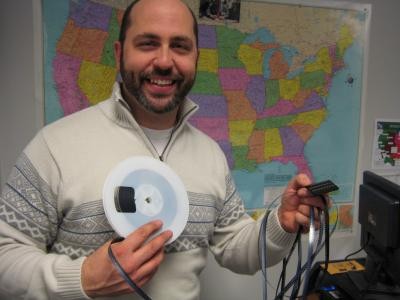Seth Homer is a Product Support Specialist for Engineered Solder Materials. He’s like a Green Beret or Navy Seal of solder preforms. He is another contact here at Indium that you can use to make your soldering application more successful and efficient.
You can read more about Seth here: http://www.indium.com/people/biographies/seth-homer/.
Here’s what he has to say about preforms for die attach applications…
Jim: You have a trained eye for solder preform applications, how often do you see opportunities where a customer can improve their process by using a different form of solder?
Seth: Although my world is engineered solders, and I am somewhat bias, I have yet to visit a customer who has no interest or need for a preform. The advantages are many….
Repeatability in solder volume
Repeatability in flux percentage in situations where flux is required
Ease of placement where automation is a possibility (Tape and Reel or Waffle pack)
In situations where paste is the current process, switching to a preform offers a stronger joint, a cleaner joint (less flux), and less voiding due to flux residue.
In situations where a solder joint needs to be fortified, a small preform added to the paste offers increased reliability (Solder Fortification®)
Jim: Strong, clean, void free solder joints are especially important for high power die attach applications. Aside from equipment changes, what can customers expect if they change over to a preform application from a paste application?
Seth: That would depend on a lot of things; in all honesty there are some applications where paste is the best option. [Like a drop-in replacement for polymer die attach materials, die attach paste utilizes the same equipment set.] Any process/application change will demand optimization, but once those variables are addressed, I think most of our customers will see yield increases as well as reliability increases.
Jim: One important concern for an engineer switching from a dispensed material to a solid (preform) material is packaging and presentation to die-attach equipment. Can you give me a rundown of packaging options for solder preforms for HVM production and prototyping?
Seth: In HVM situations, automated placement is a must. We have two primary options for HVM packaging for an automated process. Tape and reel, or waffle pack. Tape and reel offers high speed placement, flexibility, high volume packaging on a compact reel, and an environment which prohibits damage to individual parts. Waffle pack offers many of the same benefits of tape, but lends itself better to manual placement if an automated process is not needed.
Jim: If our readers are interested, what is the best way to get started evaluating preforms?
Seth: The best way to begin is to define what you want to achieve, and then bring your request to me or one of our application engineers. This gives us an opportunity to understand what you’re trying to achieve, and make suggestions to help if needed. This will make the transition to an engineered solder much smoother, and rewarding.
Seth can be reached at shomer@indium.com


